In this blog post we have two very special guests – first up is longtime collaborator and close friend, our amazing Director of Photography on The Wizards of Aus, the awesome Benjamin Hidalgo De la Barrera, followed by his trusty 1st Camera Assistant, the incredibly hardworking Jonathan Haynes. Enjoy!
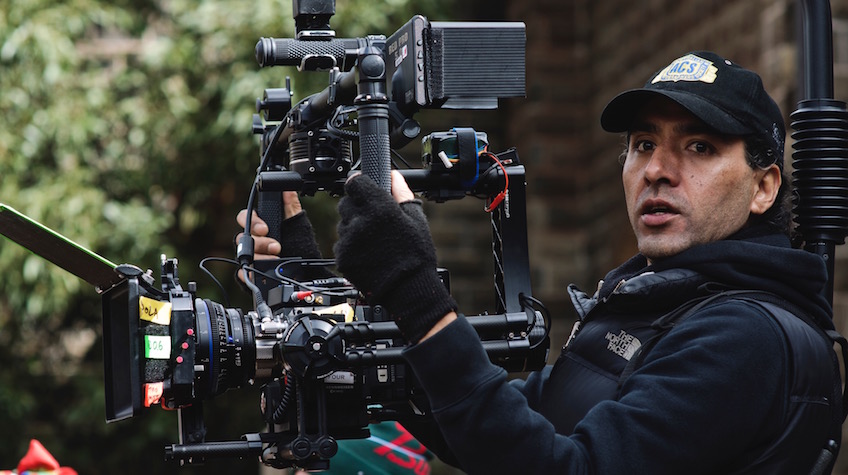
Shooting The Wizards of Aus has been one of the most challenging jobs I’ve had.
When Series Producer Chris Hocking first approached me, he laid out the basic plot, explaining this was essentially a Lord of the Rings parody and production values needed to be high. This had to look like an epic high-budget production; except they had millions of dollars and we only had a few hundred grand; they had years to film, and we only had a little under four weeks to shoot six 15-minute episodes. Such an ambitious project, so much coverage, so little time….
How about it, Benny boy? Up for the challenge?
Hell, yeah!!
We needed to be able to move fast, whilst still obtaining high-end images. After testing different rigs, we chose to shoot on the Red Dragon with Compact Primes on a Gremsy (supplied by Flying Dragon) which was then mounted on an Easy Rig. This allowed us to move fast as far as coverage was concerned. We also had a dolly and track for a few shots when we used our zoom lens, which also played on sticks from time to time.
As far as lighting was concerned, for exteriors, it was a matter of controlling and manipulating natural light. We didn’t have the budget or the manpower to use large daylight sources. As a result, from day one I briefed my lighting department to make sure I had a key light 90 degrees from camera and a back edge at all times; so as I was blocking the scene with Michael and Daniel Daperis (1st Assistant Director), my lighting boys were moving 12×12 frames into place to achieve this. They poured their hearts and souls into this, managing to always keep us a step ahead.
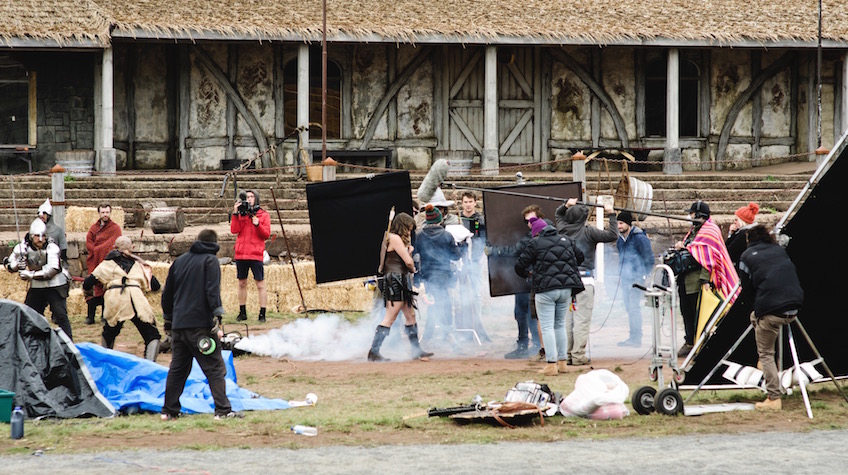
When it came to interiors, everything was lit. I like moody lighting and contrast and my camera on the dark side of my actors’ faces, which in low-budget circumstances can be difficult to attain. We placed sources where required, and once the desired lighting diagram was completed we began playing with temperatures and levels. Once we captured a few interior scenes along with lengthy conversations on what I was trying to achieve, my lighting boys were able to anticipate what I’d ask of them as I was blocking the scene.
We had the same basic approach concerning camera work. My 1st Assistant Camera, Jono Haynes, was paramount in accomplishing this. After we shot a couple of scenes and had had considerable discussions regarding style, he was fully adept at what lenses Michael and I would want for coverage, which meant the camera was always ready and standing by. I can’t stress how important Jono’s work was and how valuable an asset he was to the production, always keeping images sharp without rehearsals. His flexibility and adaptability during production allowed us to pull it off. We could have never done it without him.

I’ve worked with Michael once before on a 48hr short film entitled The Script Machine which he co-directed with another of our producers, Nicolas Colla. That shoot was a unique experience, and I’ve been looking forward to working with him ever since. It was exciting being his eyes on Wizards. Having that many roles in a production can be overwhelming to most people, but not to Michael. His capacity to jump from an actor’s to an editor’s to a VFX’s head space as needed didn’t seem to faze him at all. He had a clear and concrete idea of what he was trying to achieve, but was still open to suggestions and new or different ways of going about it; all this while making jokes and maintaining a great atmosphere on set.

I thoroughly enjoyed shooting this and will be forever grateful to everyone involved, four weeks of laughs and hard work with friends I love…challenge met.

My name is Jonathan Haynes and I worked as the 1st Assistant Camera on The Wizards of Aus.
On the series the following equipment was used:
- Red Dragon
- Zeiss Compact Primes (set of 5 lenses)
- Zeiss Compact Zoom 70-200m
- Gremsy H14 Stabilizer with an Easyrig
- RT Motion wireless follow focus
- Teradek Bolt transmitter and receiver
As you will see in the series there is a lot of camera movement so it was important to have the Red Dragon as light and slim as possible. This limited us on what we could have on the camera to keep weight down.
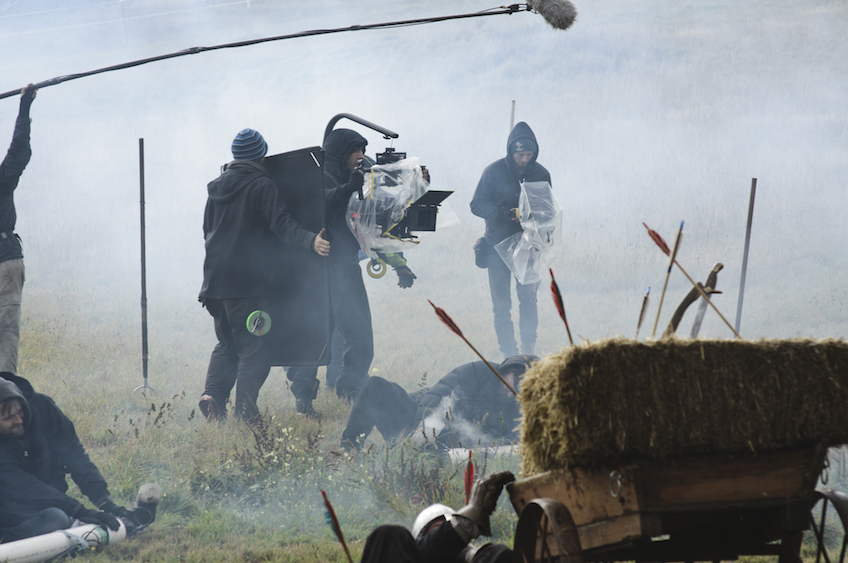
One challenge for me during pre-production, while working with the Gremsy H14 Stabilizer was, I didn’t want to limit the decision making of Michael Shanks (Director & Main Character) and Benjamin Hidalgo De la Barrera (DOP). As some scenes worked better on the dolly rather than on the Gremsy, it was important to be able to change from fly mode setup into production setup fairly quickly so the guys would have the freedom to choose what setup they wanted without any worry of time constraints or long build times.
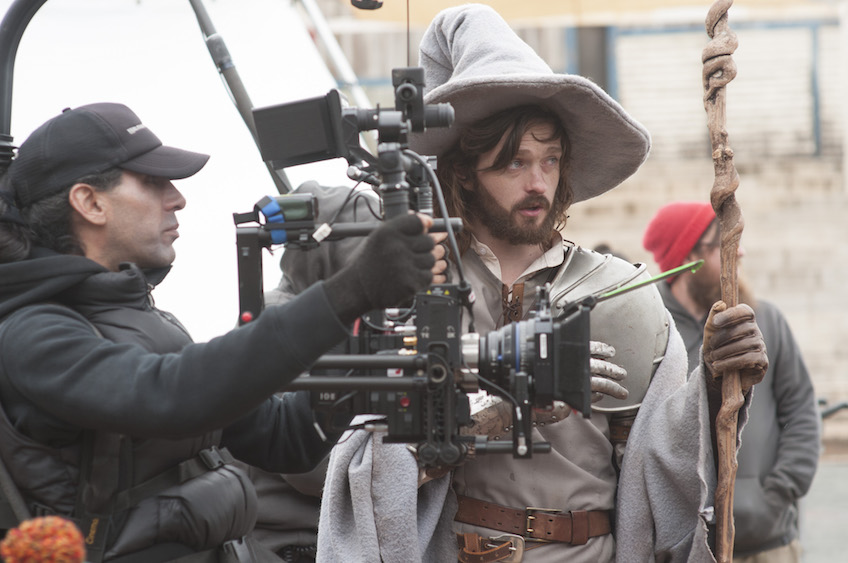
With these rigs in my experience they are still fairly heavy and awkward even with an Easyrig. So I decided to make up a docking station, with the help of The Vision House guys, so Ben could rest the camera when he felt like it. The other good advantage of the docking station was that we could rest it on the stand so Ben was able to light the scene without having to hold the rig and keep frame.
Most steadi-cam and Gimbal setups usually have as much focus tools as possible on them such as a Cinetape, monitors and a wireless motors for focus, iris and zoom. I didn’t have access to a Cinetape and we were using Primes (Zeiss CP.2’s). I only had one focus motor on the camera and Ben was able to adjust his own stops with ease. As I said there was a lot of camera movement, Ben chose to mainly shoot around T4’s and I think he mainly did this to help me in focus land. In all honesty the shots still looked great regardless of them being at T4. I think the decision to not shoot everything wide open on the lens complements the series as there was a lot going on in the backgrounds of shots most of the time, so there was no need for the backgrounds to be soft.
The other reason was, for example when we shot the castle battle scenes we mainly had overcast shooting conditions but the sun did pop out a little or it got darker. Ben would either stop down or open up to compensate for sun or cloud. He didn’t trap himself in shooting wide open (T2.1) and then having to constantly waste time on changing ND filters. I can’t stress enough there was really no time for that and Ben knew that. It was only myself and Ben in the camera team for majority of the shoot, so speed was critical for us as a team.
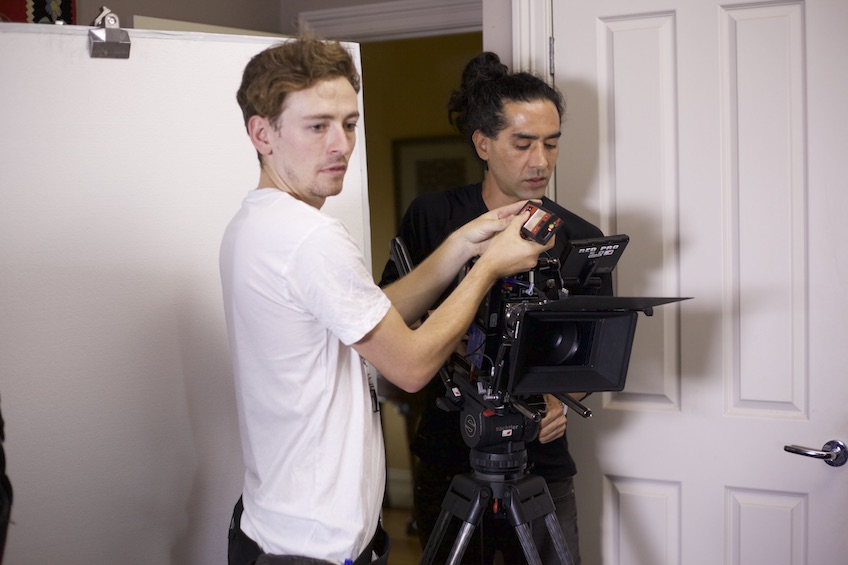
It is always a challenge with gimbal shots for focus, but I like a bit of a challenge. It was pretty free flowing at times and especially with the battle stuff. I think as an AC it is super important to drop marks for actors and get focus marks where possible. I would always give the actors a mark and give Ben a starting position for the camera. By doing that I knew the rough focus distance to go off, and at times I would only get one or two marks and then just go wherever the shot took me. Ben was great to work with in that respect. The communication between us was really strong and I think it helped enormously during the shoot.
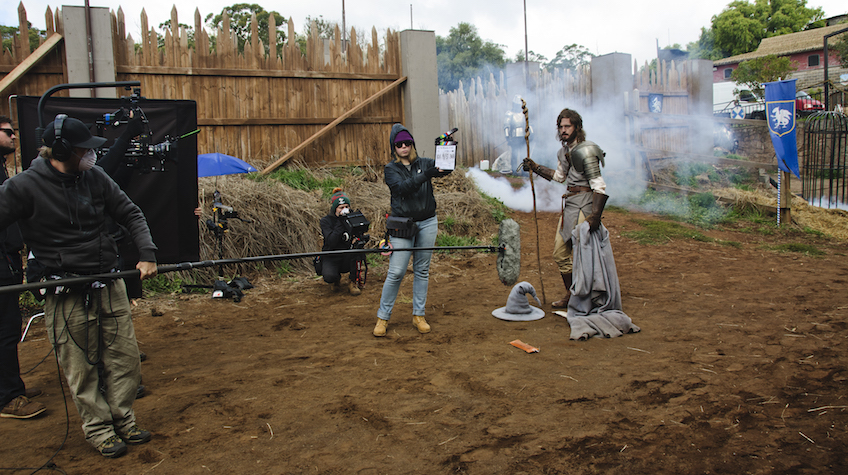
I want to breakdown at least one shot that was difficult for focus. One in particular that stands out for me is when we are introduced at the start of the scene to Jack sitting in his car stuck in traffic trying to get to his interview. The camera is on the dolly for this particular setup and we are on a 85mm lens. The shot starts by tracking into the side mirror into a close-up of Jack in the reflection sitting in the front seat. Suddenly the camera quickly pans around as we pass the mirror into a close-up of Jack. From there the camera continues to track back into a mid-shot.
This shot wasn’t a heavy performance shot but it was definitely more of a technical shot for the camera and grip crew. This shot took us around seven to eight takes to get a few good options for the edit. It took the team a number of tries to become in sync and get timing right. That was one challenge for me as initially the camera movement would be different each take.
So to start with it was hard to fine-tune anything properly until the move was solid. I find with difficult shots like this, the more rehearsals or more takes you do, in quick intervals, the team (Camera Operator, Key Grip and 1st AC) becomes in sync and the timing is much much better. I find if there are long pauses in-between takes everyone loses their rhythm a bit and it can take a moment to get it right again.
I fell into a trap of trying to rack focus too close in the shot as we pan. I found I was pulling too close, and keep in mind at this point the camera is tracking back, so focus was coming up short. I thought there is no real reference in the shot for focus when the camera was panning so quickly around. I left the focus longer and almost didn’t adjust anything. Because by that stage we were at a similar distance as we were tracking in, so I was able to judge it from there. After that the shot became easier each take.
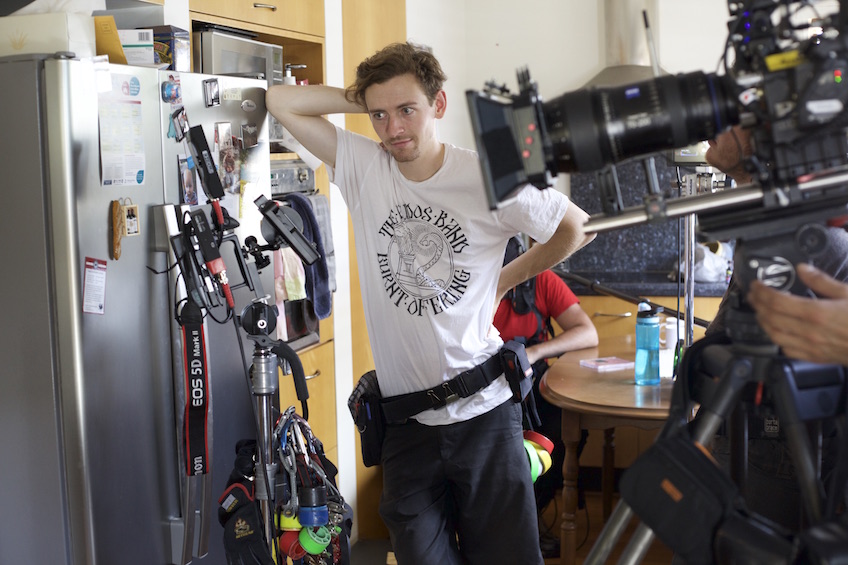
Although the team was only the two of us for the most part (DOP and 1st AC), I found the overall experience challenging but very rewarding and it was great to be part of such an interesting project, the final result will blow people away.